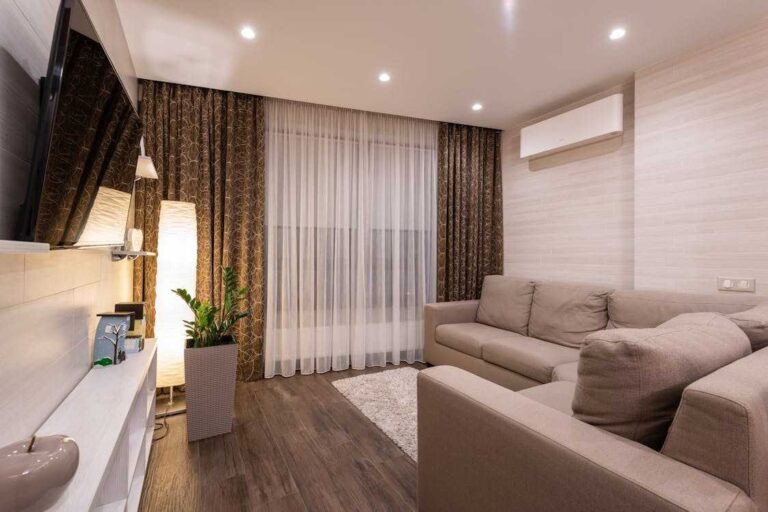Before You Decorate Run an Acoustic Test First
Most people begin decorating by picking colors, textures, and furniture.
They imagine how a room will look but rarely stop to think about how it will sound.
The truth is, sound plays a bigger role in comfort than we realize.
A beautifully styled room can still feel cold or chaotic if the acoustics are off.
Good sound design shapes emotion.
It’s the difference between a cozy evening in your living room and a restless night surrounded by echoes.
Before choosing paint or curtains, it’s worth performing a quick acoustic test to understand how sound behaves in your room and where improvements are needed.
You’ll be surprised how much more inviting your space feels once the noise settles and the echoes fade.
Sound isn’t just about silence—it’s about balance.
A room should breathe quietly, with soft reflections that make conversations pleasant and music feel alive.
Starting with an awareness of sound sets the tone for every design decision that follows.
Why Sound Matters in Interior Design
Interior design isn’t only visual; it’s sensory.
The way a room sounds affects how relaxed or energized you feel in it. Hard surfaces like tile and glass reflect noise, amplifying footsteps and voices.
Too much reflection makes spaces feel harsh, even when they look perfect.
Think of a kitchen that echoes every clink of a spoon or a minimalist living room where sound bounces endlessly.
Now imagine a softly carpeted bedroom with curtains that muffle the street outside.
The difference is more than acoustic—it’s emotional. Without proper sound balance, even the most beautiful home feels incomplete.
How to Perform a Simple Acoustic Test at Home
You don’t need expensive gear or a sound engineer to understand how your home truly sounds.
Start with something simple and intuitive.
Step into the center of your room, take a breath, and clap your hands once. Then just listen.
Does the sound disappear almost instantly, or does it bounce back and linger for a second? That tiny echo tells you a lot about how sound behaves in your space—how much it reflects, where it travels, and what materials are amplifying or softening it.
Move slowly around the room and repeat the clap near different surfaces.
Try it near windows, in corners, or beside tall furniture.
You’ll start to notice subtle differences.
Glass tends to bounce sound sharply, while curtains or cushions absorb it.
Hard floors often create a quick, bright echo, whereas rugs or carpets tone it down.
It’s a small experiment that instantly tunes your ear to the character of the room.
If you want to go a bit deeper, download a free acoustic measurement app.
These apps show how long sound lingers after you make a noise—what designers call reverberation time.
The shorter that time, the “softer” and calmer your room feels.
By observing how sound changes in different spots, you’ll begin to see your home not just as a visual composition but as a living sound environment—one you can shape to feel just right.
Common Acoustic Problems in Home Spaces
Every home has its unique sound challenges.
Large open-plan rooms often echo like empty halls because hard floors and bare walls leave sound nowhere to go.
Minimalist spaces can feel sterile when sound bounces freely between flat surfaces.
On the other hand, some rooms absorb too much noise.
Thick carpets, heavy drapes, and soft furniture can make them feel flat or dull. It’s all about finding the right mix—too much echo, and the space feels restless; too much absorption, and it loses its liveliness.
Understanding that balance begins with listening carefully to your space before you redesign it.
Design Elements That Improve Acoustics Naturally
You don’t need to live inside a sound booth to enjoy great acoustics.
A calm, balanced sound can be achieved with thoughtful, beautiful choices that blend seamlessly into your decor.
The secret is layering—mixing textures, materials, and shapes that absorb, diffuse, and soften sound without making the room feel heavy.
Textiles That Soften and Warm the Space
Start with fabrics.
Heavy curtains, layered rugs, and plush furniture all absorb sound waves that would otherwise bounce off hard surfaces.
They make a space feel warmer—visually and acoustically.
Curtains that reach the floor and rugs with dense fibers work especially well in open-plan areas or rooms with large windows.
Add cushions and throws for extra softness; they don’t just add color and comfort, they quiet the room in subtle ways.
Walls That Work for You
Bare walls are the biggest culprits of unwanted echo. But they’re also the easiest to fix.
Consider decorative acoustic panels—many modern versions look like art installations, with wood slats, linen fabrics, or geometric designs that fit effortlessly into a home aesthetic.
If panels aren’t your style, use shelves and artwork strategically.
Books, canvas prints, and fabric wall hangings all break up reflections and scatter sound waves more evenly through the space.
A large bookshelf filled with books or decor pieces can work as a natural diffuser, especially on walls opposite windows or near open hallways.
It’s a practical, stylish way to turn storage into sound balance.
Nature’s Own Sound Absorbers
Don’t underestimate plants.
Their broad leaves and organic shapes absorb and scatter sound, softening harsh reflections.
Place tall greenery like fiddle leaf figs, monsteras, or peace lilies near windows or in corners where sound tends to build up.
Group smaller plants on stands or shelves to create visual and acoustic depth.
They clean the air, add life, and quietly reshape how the room sounds.
Finding the Right Material Mix
The key to natural acoustics is contrast.
Combine soft, porous surfaces with hard, reflective ones.
Wood floors paired with woven rugs. Linen drapes beside metal lamps.
A velvet sofa across from a smooth plaster wall.
Each material plays a role—wood diffuses warmth, fabric absorbs echo, and glass brings light. Together, they balance one another, turning your space into a room that feels as good as it looks.
When your home’s design works with sound instead of against it, the difference is immediate. Voices carry clearly without sharp echoes.
Music feels richer. Even silence feels intentional. It’s not about perfection; it’s about harmony—the kind that you can see, hear, and feel.
How to Plan Your Decor After the Acoustic Test
Once you’ve really listened to your space, it’s time to design with purpose.
Every sound you heard—the echoes, the quiet corners, the spots where your voice lingered—tells you something valuable about the room. Use those clues to guide how you decorate.
If your acoustic test revealed strong reflections near the windows, start there. Add layers.
Sheer curtains paired with thick drapes or Roman shades can instantly soften sharp echoes without blocking natural light.
In rooms with tile floors or large bare walls, introduce textiles—an area rug, a tapestry, or a piece of woven wall art—to absorb sound and bring warmth.
Even small changes like that can transform a room’s tone, making it feel less hollow and more alive.
Furniture placement plays a huge role too.
Think of each large piece—sofa, cabinet, bookshelf—not just as decor but as part of the acoustic design.
Position them where sound tends to bounce the most, like opposite large windows or near open hallways.
Don’t press everything flat against the wall; leaving just a little breathing space allows sound to move more naturally through the room.
It’s a subtle adjustment that makes a big difference in how the space feels.
When it comes to choosing materials, think with both your eyes and your ears.
Wood adds warmth and a natural resonance that feels grounded.
Fabric creates softness and helps quiet busy spaces.
Carpets, cushions, and throws absorb unwanted echoes and bring comfort underfoot.
Glass and metal, when used sparingly, add brightness and clarity.
It’s all about layering—not just visually, but acoustically—until your home feels balanced, calm, and beautifully alive.
A well-planned room doesn’t just look good—it sounds right. And when those two elements align, that’s when a space truly feels like home.



